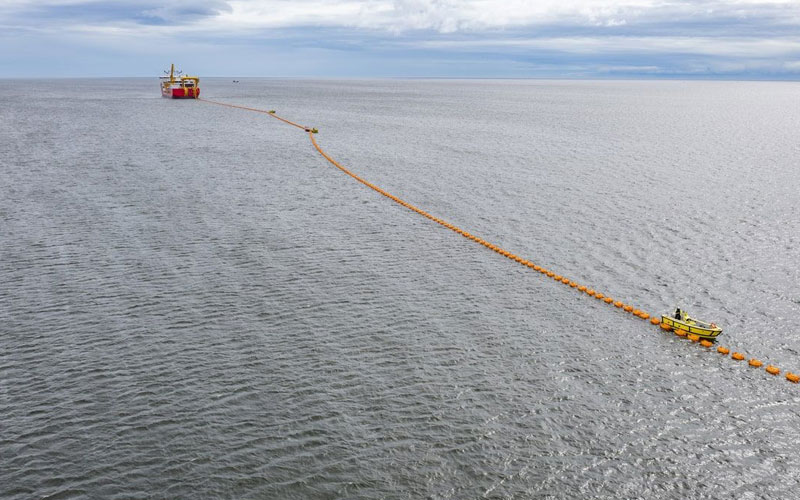Nexans has won a turnkey contract for the Greece-Cyprus section of the EuroAsia interconnector, which is worth EUR 1.43 billion. The 525kV HVDC cable will be the longest and deepest interconnector in the world with a bi-pole length of 2×900 km. Pole One is expected to be completed in 2028 and Pole Two in 2029.
Jul 19, 2023

Nexans has been awarded the major turnkey contract for the section of the EuroAsia Interconnector that connects Greece and Cyprus, valued at EUR 1.43 billion. As a critical part of a broader project to connect the grids of Greece, Israel, and Cyprus, the 525kV HVDC cable will be the longest and deepest interconnector in the world with a bi-pole length of 2×900 km, and will run across the Mediterranean Sea floor at depths of over 3,000 meters. Subsea HVDC Mass Impregnated cables will be manufactured in Nexans’ facilities in Halden (Norway) and Futtsu (Japan), and will be installed by the state-of-the-art cable laying vessels Nexans Aurora and Nexans Skagerrak. The EuroAsia Interconnector will exchange up to 1,000 MW among the three nations with the capability of increasing to 2,000 MW, the equivalent to 3 million households’ average electricity consumption, and will end the energy isolation of Cyprus by creating an energy highway between Europe and Asia, it will be the largest interconnector project in history, supplying over 3 million homes with electricity.
Also Read: Leoni to Establish Additional Wiring Systems Plant in Morocco
Pole One is expected to be completed in 2028 and Pole Two in 2029. The interconnector has been designated as a Project of Common Interest (PCI) by the European Union which will allow the project to benefit from accelerated planning and permitting, lower administrative costs, and public participation. To qualify as a PCI, a project must also contribute to the European Union’s energy and climate goals, and as a result, much of the electricity being shared will be from renewable and decarbonized sources. IPTO, Transmission System Operator of Greece, has been providing technical and operational capacity to the project ensuring the successful implementation. The parties expect formal clearance of the Greek and Cypriot energy regulators to intervene in due course.




